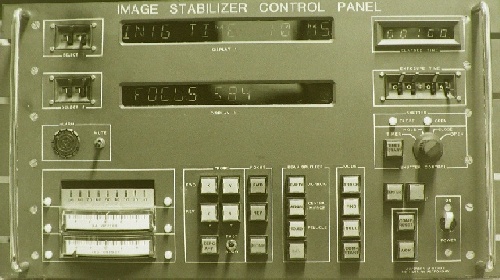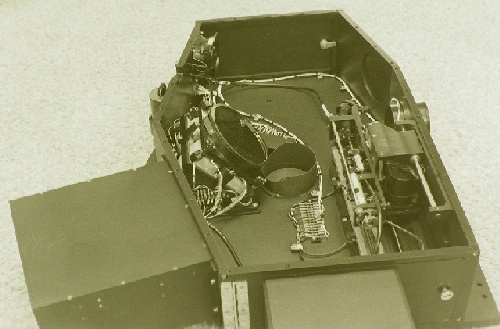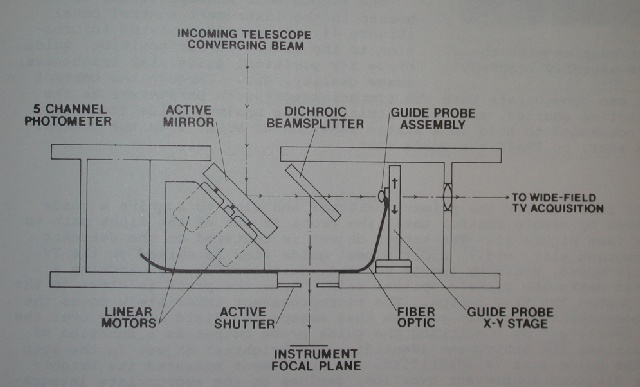

My first step into adaptive optics was taken in the early 1980's with the design and construction of a microprocessor controlled tip-tilt mirror system that I called ISIS (Image Stabilizing Instrument System). The development of ISIS was done in collaboration with Herb Ryerson, at that time the Head of Electronics at the University of Hawaii's Institute for Astronomy. ISIS was controlled with a board-level embedded Intel 8031 microcontroller that I programmed in machine language (through an interface board installed in a DEC PDP 11 minicomputer). When operating at the telescope, ISIS sensed an off-axis guide star with a mobile 5-fiber guide probe. In addition to tip-tilt sensing, ISIS was equipped with an active shutter allowing it to record only the moments of highest image quality. Today this method is called "lucky imaging". The threshold for the active shutter could be set in real-time.
Once completed, ISIS was used at the Cassegrain foci of both the University of Hawaii 2.2-m and the CFHT 3.6-m telescopes. It was the first such system to be used successfully on Mauna Kea, even though the CFHT organization simultaneously developed what they called VHRCam and later HRCam. The CFHT work was started in response to -- or to compete with -- the development of ISIS.
The basic concept was relatively simple. When the seeing is at its best on Mauna Kea, the wavefront is relatively flat over the aperture of a moderate sized telescope in the aperture range 2.2 to 3.6 meters, and hence the majority of the image degradation comes from tip-tilt motions. These degradations also have the largest isoplanatic angle, so tip-tilt guide stars can be acquired over a reasonably large field of view.
The following schematic, which was first reproduced in the ISIS design paper
(L.A. Thompson & H.R. Ryerson 1983, Instrumentation in Astronomy V, Proc.
SPIE, vol. 445, p. 560) shows the simplicity of the design. The Cassegrain
beam for the telescope is deflected before it comes to focus by the main
tip-tilt mirror, and before sending the beam on to the Cassegrain focus the
beam hits a dichroic where light from the guide star is acquired.

In actual operation, ISIS did an excellent job removing both the atmospheric tip-tilt jitter and small-scale irregularities in the telescope drive system during an exposure. However, ISIS was unable to break the 0.5 arcsec (FWHM) barrier, as was originally anticipated when the system was first proposed. This fault remained an enigma until the CFHT work with VHRCam and HRCam found that the telescopes themselves had built-in static aberrations produced by (for example) the primary mirror support structure and poor collimation of the telescope optics. Once these static aberrations were removed with corrective optics, the CFHT HRCam pushed below the 0.5 arcsec. barrier. By that time, ISIS had been de-commissioned, and I had moved on to work with laser guide stars. Examples of scientific results produced by ISIS can be found below:
Nucleus of Cygnus A and Coma Globular Clusters.
Photographs of the ISIS Control panel and the ISIS Instrument Housing are shown below.
 |
 |
|---|